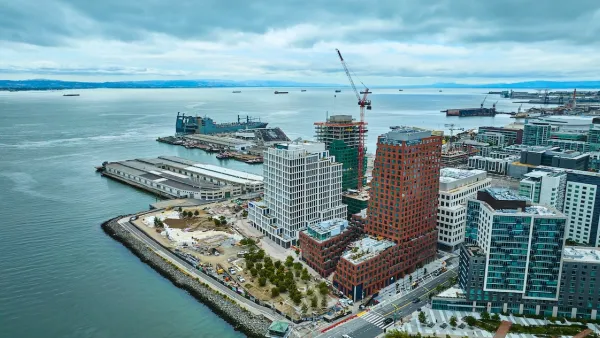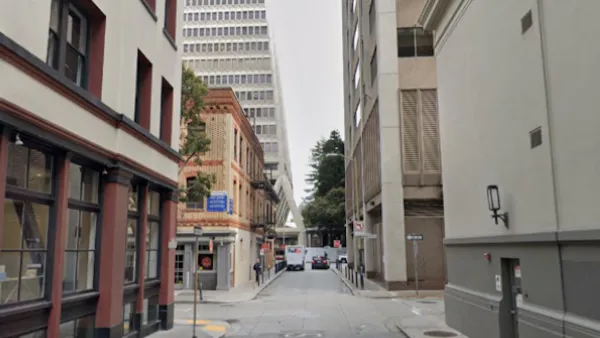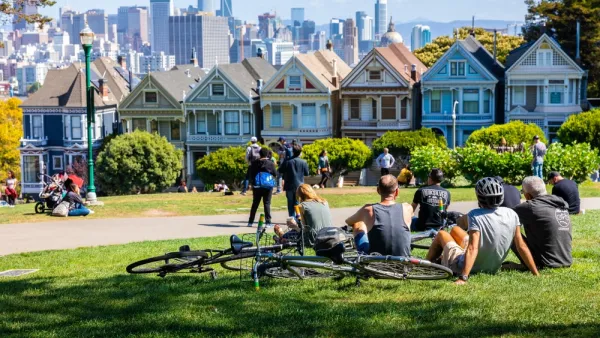San Francisco building codes encouraged the creation of privately-owned, publicly-accessible spaces across the downtown. These spaces have gone underused and are little understood. A new report from SPUR attempts to clear the fog.
"The shortage of public spaces in San Francisco's downtown has long been compounded by the fact that the urban geography of privately owned public open spaces (POPOS) makes them hard to find and even harder to enjoy. San Francisco Planning and Urban Research (SPUR) last week released a report that details all of downtown's POPOS, complete with a printable map (PDF), and makes recommendations on how to improve access and amenities.
San Francisco's first privately owned, publicly accessible park was constructed at the base of the Transamerica building in the late 1960s. At that time, building codes neither required nor encouraged development of public space at street level, and accordingly most office towers were built right to the edge of the property. The few exceptions were in buildings where developers sought density and height bonuses and created public space as a condition for approval.
In the 1985 Downtown Plan the city codified the conditions under which developers had to construct publicly accessible open spaces, which could be as diverse as plazas, greenhouses, or atriums, but had to comply with standards of landscaping, design, seating, and bathrooms. Yet, the city made no effort to provide information about the plazas in aggregate."
FULL STORY: Unlocking San Francisco’s Privately Owned Public Open Spaces

Analysis: Cybertruck Fatality Rate Far Exceeds That of Ford Pinto
The Tesla Cybertruck was recalled seven times last year.

National Parks Layoffs Will Cause Communities to Lose Billions
Thousands of essential park workers were laid off this week, just before the busy spring break season.

Retro-silient?: America’s First “Eco-burb,” The Woodlands Turns 50
A master-planned community north of Houston offers lessons on green infrastructure and resilient design, but falls short of its founder’s lofty affordability and walkability goals.

Test News Post 1
This is a summary

Analysis: Cybertruck Fatality Rate Far Exceeds That of Ford Pinto
The Tesla Cybertruck was recalled seven times last year.

Test News Headline 46
Test for the image on the front page.
Urban Design for Planners 1: Software Tools
This six-course series explores essential urban design concepts using open source software and equips planners with the tools they need to participate fully in the urban design process.
Planning for Universal Design
Learn the tools for implementing Universal Design in planning regulations.
EMC Planning Group, Inc.
Planetizen
Planetizen
Mpact (formerly Rail~Volution)
Great Falls Development Authority, Inc.
HUDs Office of Policy Development and Research
NYU Wagner Graduate School of Public Service




























